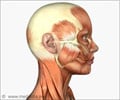For the first time, an RNA 'bandage', which shields genetic mutations, could trigger the production of a missing, muscle-strengthening protein in boys with Duchenne muscular
A recent study has found that a new RNA 'bandage', which shields genetic mutations, could trigger the production of a missing, muscle-strengthening protein in boys with Duchenne muscular dystrophy (DMD).
Around 1 in 3500 boys are born with DMD, the result of mutations in a gene on the X chromosome for the protein dystrophin.Boys with DMD tend to need wheelchairs by age 12 and die of cardiac or respiratory failure before they reach 30.
"When the dystrophin gene was identified 24 years ago, there were very high hopes that gene therapy would correct the condition," New Scientist quoted Steve Wilton of the University of Western Australia in Perth, as saying.
But hopes fell when the gene's complexity and size became clear- it is the largest known in humans.Reintroducing a healthy gene was not as simple or straightforward as anticipated," he added.nstead of trying to correct the genetic defects, the researchers created nucleic acid snippets that bind to sections of messenger RNA corresponding to the DMD mutations.
If injected, these bandages cause the mutations, which normally prevent dystrophin production, to be skipped over during protein making.
In 2003 the approach seemed to work in mice.
Advertisement
Now the team has injected the snippets into the blood of 20 boys with DMD.
Advertisement
It is not yet clear if the dystrophin will increase the boys' muscle strength, but Wilton pointed out that it did in animals.
The protein resembles the version found in men with the milder Becker's MD, who live into their 60s.
"This is the most promising therapeutic option for Duchenne's," said David Allen of the University of Sydney.
Source-ANI
TAN








